When you're in addiction recovery, it’s common to wonder why certain situations trigger overwhelming emotions or reactions. These patterns aren’t random—they’re often rooted in the body’s trauma response. Understanding trauma response in women is especially important, as trauma can affect women differently and more deeply due to past experiences like abuse, neglect, or loss. In this blog, we’ll explore the different types of trauma responses, why they develop, how they show up in daily life and recovery, and practical ways to begin healing with compassion and awareness.
Common Types of Trauma Response in Women
Trauma doesn’t always look the same from person to person—but it tends to follow a few recognizable patterns. The most well-known responses are fight, flight, freeze, and fawn. These are the body’s instinctive ways of protecting itself in the face of real or perceived danger. While they may have once helped you survive painful experiences, they can show up in recovery in ways that feel confusing or overwhelming.
Understanding trauma response in women means looking at how these reactions often present in daily life. For example, fight might show up as irritability or controlling behavior. Flight can look like overworking or constantly staying busy to avoid emotional pain. Freeze often manifests as dissociation or shutting down emotionally, while fawn involves people-pleasing or prioritizing others at the expense of your own needs. These responses aren't flaws—they're survival strategies that may no longer serve you today.
Recognizing your trauma response is the first step toward healing. Once you identify how your body and mind react to stress or triggers, you can begin to work with those patterns instead of against them. For many women in recovery, this awareness opens the door to self-compassion, trauma-informed therapy, and healthier coping strategies that support long-term emotional well-being.
The Science Behind Triggers and Trauma Response in Women
Triggers are sensory reminders—sights, sounds, smells, or even emotions—that activate the brain’s memory of a past traumatic experience. When a trigger is encountered, the amygdala (the brain’s fear center) signals that you’re in danger, even if the threat isn’t real or present. This sets off a cascade of stress hormones like cortisol and adrenaline, preparing your body for a fight, flight, freeze, or fawn response. For women who have experienced trauma, especially during childhood or in intimate relationships, the brain can become hypersensitive to these triggers over time.
This heightened sensitivity is a key component of trauma response in women. It helps explain why something seemingly small—like a tone of voice or a certain smell—can cause a powerful emotional reaction. These responses aren’t a sign of weakness; they’re a reflection of how the nervous system has been shaped by past pain. Learning to identify and regulate triggers is essential in recovery and allows women to slowly rewire the brain’s response patterns in safer, more empowering ways.
PTSD, C-PTSD, and the Roots of Trauma Response in Women
Post-Traumatic Stress Disorder (PTSD) and Complex PTSD (C-PTSD) are both deeply connected to how the brain and body respond to trauma. PTSD typically develops after a single, intense traumatic event—such as a car accident or assault—while C-PTSD often results from repeated or prolonged trauma, like childhood abuse, domestic violence, or emotional neglect. In both cases, the nervous system becomes wired to stay on high alert, making it hard to feel safe, even long after the trauma has passed.
June is PTSD Awareness Month, a time to shine light on the impact of trauma and to encourage compassion, education, and access to support for those living with its effects.
These conditions play a major role in trauma response in women. Many women living with PTSD or C-PTSD experience flashbacks, emotional numbing, hypervigilance, or overwhelming shame. These symptoms are not personality flaws—they’re survival responses shaped by trauma. Understanding the difference between PTSD and C-PTSD can help women better identify the roots of their reactions and seek appropriate support, whether through therapy, group work, or trauma-informed care.
Practical Strategies for Managing Triggers
Learning to manage triggers is a crucial part of healing from trauma. Because trauma response in women often stems from deeply ingrained patterns, the goal isn’t to eliminate triggers overnight—but to build skills that help you respond with awareness and care. One of the most effective tools is grounding, which helps reconnect you to the present moment when your mind starts to spiral. Try placing your feet flat on the ground and pressing your heels into the floor. You can also name five things you can see, four things you can touch, three things you hear, two things you smell, and one thing you taste—the 5-4-3-2-1 technique.
Other grounding practices include holding a textured object (like a smooth stone or piece of fabric), splashing cold water on your face, or practicing box breathing—inhaling for four seconds, holding for four, exhaling for four, and pausing for four. Physical movement, such as taking a walk, stretching, or tapping your hands or legs rhythmically, can also help discharge stress from the body. These strategies are especially helpful for managing trauma response in women, as they calm the nervous system and create space between the trigger and the reaction. With regular practice, grounding can become a go-to skill in your recovery toolkit.
Another important tool is tracking your triggers. Keep a journal of moments when you feel suddenly anxious, shut down, or overwhelmed. Over time, you may notice patterns—certain people, situations, or environments that activate your trauma response. Once you’re aware of these triggers, you can create a plan: set boundaries, communicate your needs, or work through those moments with the support of a therapist. Recovery is not about avoiding discomfort—it’s about facing it with the right tools and support system in place.
Expanding the Window of Tolerance
The window of tolerance is the range of emotional intensity we can handle while still feeling grounded and in control. When we're inside this window, we can process stress, think clearly, and respond instead of react. But for many women who’ve experienced trauma, this window is much narrower. Everyday stressors or emotional triggers can quickly push someone into hyperarousal (anxious, angry, panicked) or hypoarousal (numb, disconnected, shut down). Understanding this concept is key to making sense of trauma response in women.
The good news is that the window of tolerance can grow over time with the right support. Grounding exercises, breathwork, body-based therapies, and consistent emotional regulation strategies can help widen this window so that triggers don’t feel as overwhelming. With practice, women in recovery can begin to stay present during difficult moments, regain control over their reactions, and create space for healing instead of reactivity.
Healing Together: How Twin Branch Wellness & Recovery for Women Supports Trauma Response
Understanding trauma response in women is a vital step toward reclaiming your life and finding peace in recovery. At Twin Branch Wellness, we recognize that every woman’s journey is unique, and healing requires more than just willpower—it requires compassion, education, and a safe space to grow. Through trauma-informed therapy, personalized care plans, and supportive community programs, Twin Branch helps women build resilience, manage triggers, and expand their window of tolerance.
If you’re navigating the complex emotions and challenges that come with addiction recovery and trauma, know that you don’t have to do it alone. Twin Branch Wellness offers expert guidance and holistic support designed specifically for women who want to heal on their own terms. With patience and understanding, together we can turn trauma responses from barriers into breakthroughs, empowering you to live a healthier, fuller life.











